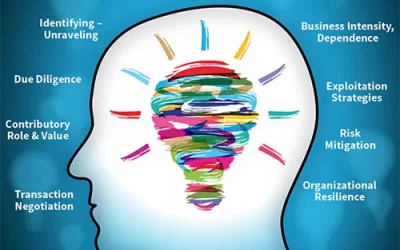Michael D. Moberly October 26, 2009
Question; are there systemic risks to the intellectual property and intangible assets held by companies?
The phrase-term ‘systemic risk’ has a relatively long history. But, its revival, beginning in early Fall, 2008 has now become part of our ‘recession lexicon’. Its subsequent wide spread use in legislative (House, Senate) committee hearings on Capital Hill wherein testifying cabinet secretaries, legislators, regulatory agency heads, and c-suites routinely evoked the term (systemic risk) as part of a seemingly self-explanatory narrative, i.e. visualized sound byte, to convey (a.) how – why financial institutions and the financial services sector was literally unraveling, and (b.) the intertwined – embedded nature/elements of the globalized financial system. Then interestingly, systemic risk was also ultimately applied as the underlying rationale for the notion of ‘too big to fail’, hence the TARP bailout provisions.
One, perhaps best understood, definition of systemic risk is provided by Steven Schwarcz of Duke University School of Law wherein he described it (systemic risk) as ‘the probability that cumulative losses will occur from an event that ignites a series of successive losses along a chain of (financial) institutions or markets comprising a system’.
Another, admittedly ‘cherry picked’ definition of systemic risk is provided by BusinessDictionary.com in which it (systemic risk) is defined as ‘the probability of loss common to all businesses…and inherent in all dealings…risk that cannot be circumvented or eliminated’. This definition surely places the notion of systemic risk in an enterprise (IP-intangible asset) risk management (ERM) context.
A commonality embedded throughout the various definitions of systemic risk is the notion of a ‘triggering event’. A trigger is an event that causes (internal, external domino types of) consequences that adversely affects (a company’s) competitive advantages, asset value, market position, reputation, brand, image, goodwill, etc. In the case of a company’s IP and/or intangible assets, ‘triggering events’ could be the (a.) theft, misappropriation, infringement, and/or leakage, and/or (b.) significant counterfeiting or product piracy anyone of which could collectively undermine asset value, competitive position, etc.
Collectively then, this constitutes a fairly strong rationale why company’s should engage in routine monitoring, valuation, and ‘stress tests’ on their IP and intangible assets. The purpose is to objectively and proactively determine if any (asset) materiality changes, value erosion, and/or undermining, etc., are occurring and prevent and/or mitigate same. Such exercises are now being recognized by management teams, boards, and c-suites alike, as useful and necessary ingredients to (a.) the effective stewardship, oversight, and management of their company’s intangible assets, and (b.) avoid costly and often times irreversible surprises!



